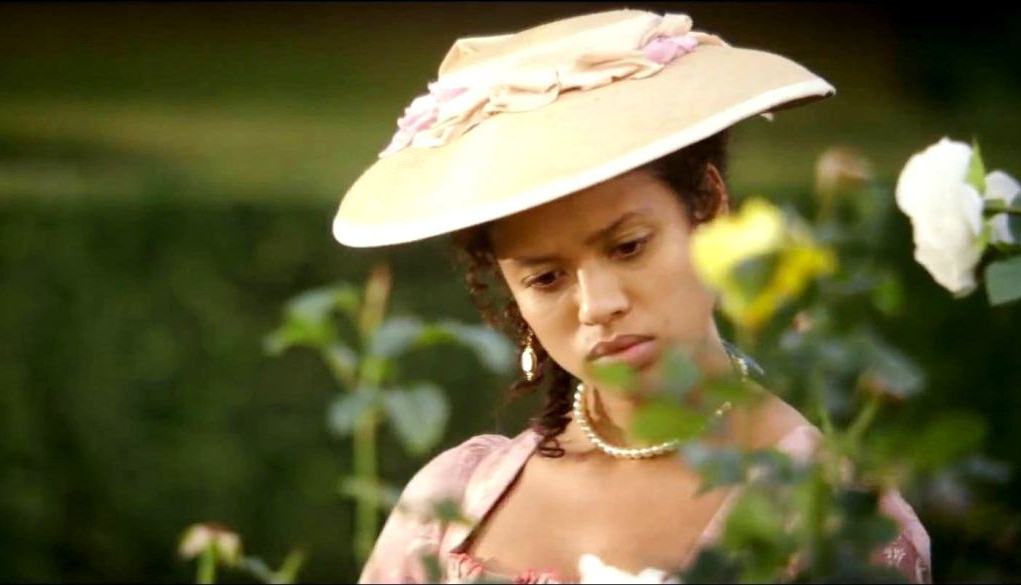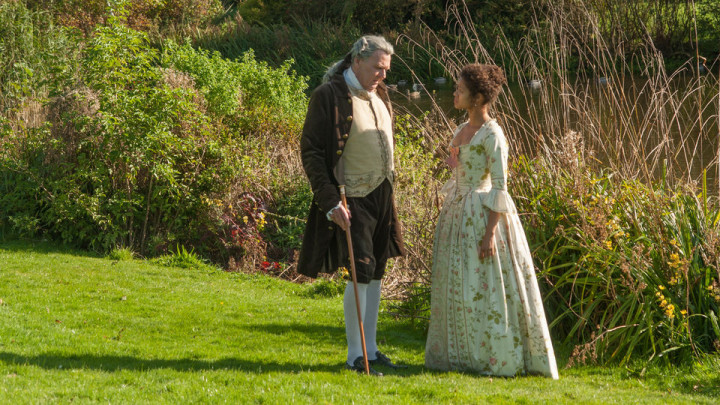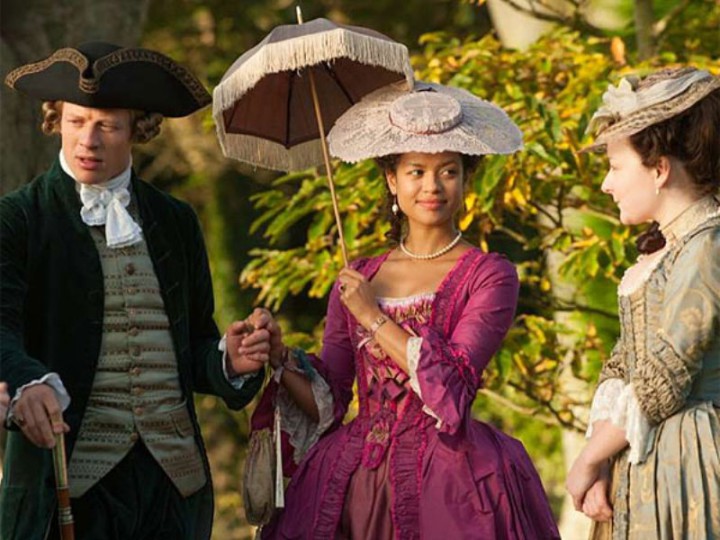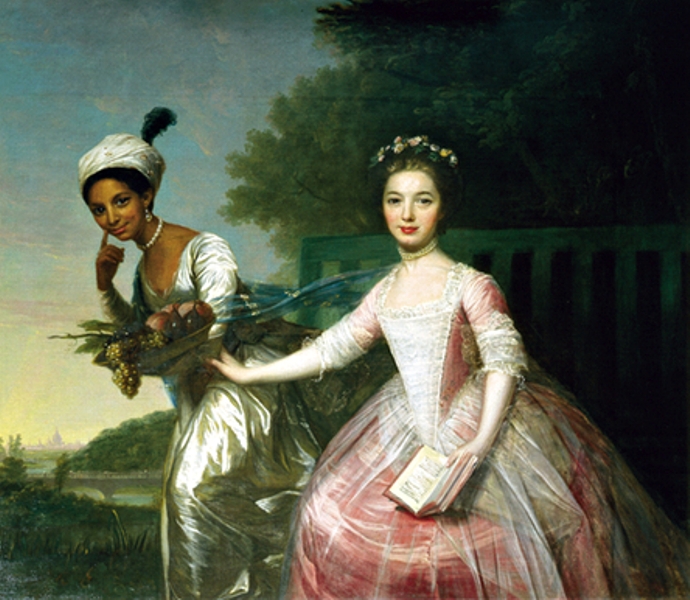I approached Amma Asante’s Belle with a great deal of trepidation. The term “costume picture” has come to suggest the Masterpiece Theatre or Merchant Ivory realm of movies — a type of movie that more often than not is what I think of as le cinema avec a stick up its butt. So with echoes of Alfred Hitchcock saying, “I can never imagine people in costume pictures going to the bathroom,” ringing in my ears, I settled in for what I assumed would be a trial — especially at a 9 a.m. screening. I was very pleasantly surprised when it turned out that Belle is actually a good movie — not a great movie, but it’s a good one that is sometimes very, very good. It has heart, wit and it’s very entertaining. It is also a stunningly gorgeous film with some of the finest uses of natural light I’ve seen in years.
Belle tells the story of Dido Elizabeth Belle (Brit TV actress Gugu Mbatha-Raw), the illegitmate daughter of Captain Sir John Lindsay (Matthew Goode), who deposits his motherless child (played as a child by newcomer Lauren Julien Box) at the family estate in the charge of the young girl’s great uncle, Lord Mansfield (Tom Wilkinson). The catch is that he has neglected to tell the family that Dido’s mother was black. Even so, Lord and Lady (Emily Watson) Mansfield have little choice but to raise Dido — who becomes like a sister to their daughter, Elizabeth (Sarah Gadon, A Dangerous Method). However, she is not allowed to dine with the family (more, it seems, because she’s illegitimate than because of her color), and, unlike Elizabeth, she is not “brought out” into society. Ironically — because her father has died and she is an heiress — she is the one who becomes engaged to a socially prominent young man.
All of this is played against the background of Lord Mansfield — who is Lord Chief Justice — sitting in judgment on a very high-profile case involving an insurance claim in which a “cargo” of slaves was thrown overboard and drowned — supposedly because there wasn’t water for them. The two stories complement each other. The legal case also ties Dido ever further to would-be lawyer abolitionist John Davinier (Sam Reid, The Railway Man), with whom she had a “meet cute” early in the film. (Yes, you know where this is going. This is, after all, a movie.)
Though the film is fact-based — and heavily touted that way — it strongly appears that the facts have been somewhat manipulated for dramatic purposes. Filmmaker Amma Asante has, in fact, said that the film was created from her response to Johann Zoffay’s painting of Dido and Elizabeth: “Everything you will have taken thematically from the film is what the portrait said to me the first time I saw it,” she says. She further notes, “I looked at that portrait and thought: Oh my God — look how Elizabeth loves her! I have never seen a person of color in a painting from this period not being treated as a pet. … It said: I am here. I’m relevant. I’m a lady. I’m brown. I’m made up of many things. I’m happy with who I am.” In other words, the film is only partly concerned with being an historically accurate biopic and is more a depiction of what Assante felt was underlying in that painting. Traditional? Maybe not, but it works — thanks to Asssante’s skills and the splendid performances of a first-rate cast. Rated PG for thematic elements, some language and brief smoking images.








Before you comment
The comments section is here to provide a platform for civil dialogue on the issues we face together as a local community. Xpress is committed to offering this platform for all voices, but when the tone of the discussion gets nasty or strays off topic, we believe many people choose not to participate. Xpress editors are determined to moderate comments to ensure a constructive interchange is maintained. All comments judged not to be in keeping with the spirit of civil discourse will be removed and repeat violators will be banned. See here for our terms of service. Thank you for being part of this effort to promote respectful discussion.